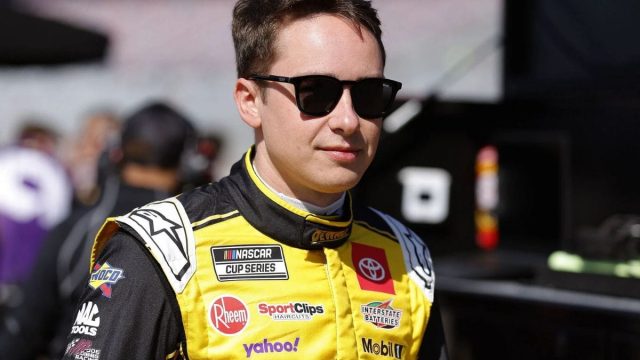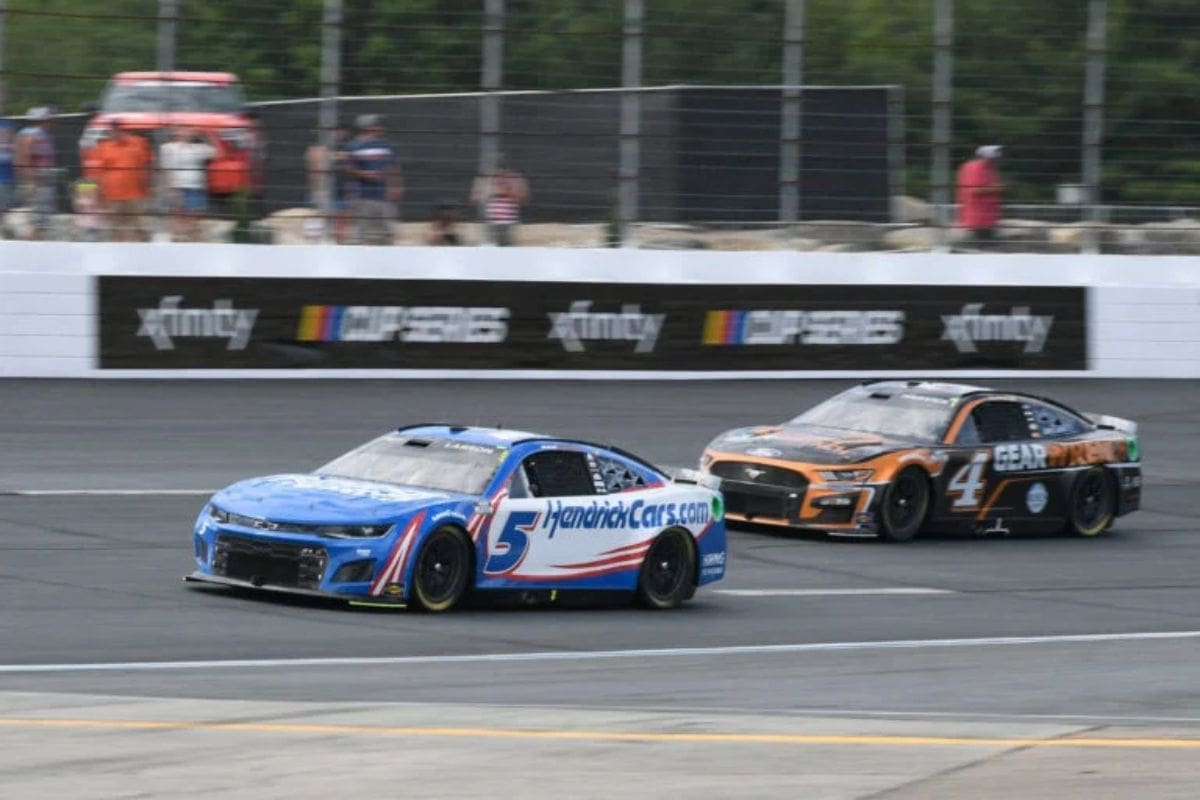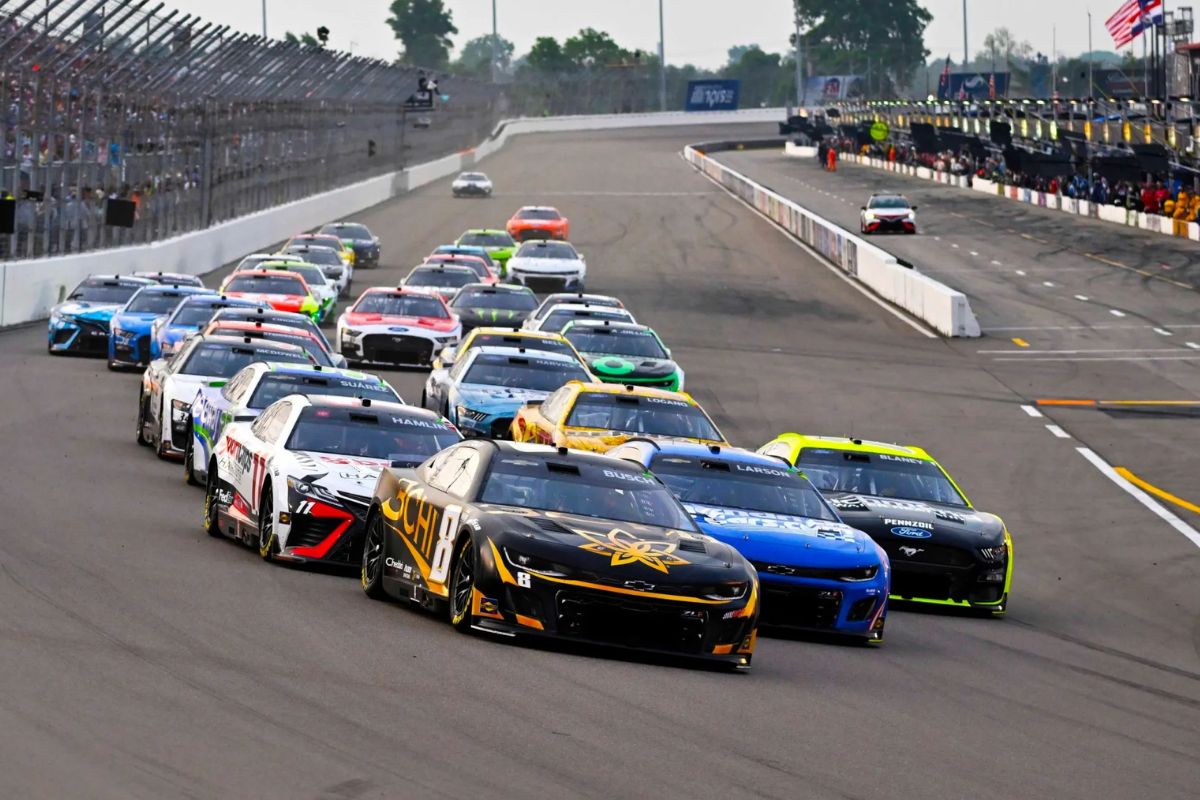Christopher Bell’s Key to Success at Daytona: Christopher Bell‘s expertise at Daytona exemplifies the intricate balance between strategy and execution in superspeedway racing. His ability to lead when it matters most demonstrates his driving skill and highlights the significance of teamwork and communication within the sport. As conditions shift rapidly, Bell’s adaptability allows him to navigate the complexities of the race efficiently. However, the ever-present question arises: to what extent does luck play a role in his success, and how do other drivers perceive this dynamic? Exploring these facets may reveal deeper insights into the art of winning at Daytona.
Key Highlights
- Efficiently maneuvering through the pack and understanding positioning are crucial for leading at Daytona.
- Collaboration with teammates enhances strategic advantages and increases the likelihood of securing a lead.
- Timing decisions in the closing laps significantly impact race outcomes and overall success.
- Effective communication with the pit crew aids in executing optimal race strategies and adjustments.
- Mastery of racecraft and mental acuity help anticipate competitors’ moves, enhancing leading capabilities.
NASCAR Returns to Daytona
As the NASCAR Cup Series makes its highly anticipated return to Daytona, the excitement surrounding the event is palpable among fans and drivers similarly. This iconic superspeedway, with its high-banked 2.5-mile oval, serves as both a historical site and a proving ground for drivers seeking to demonstrate their skills in one of the sport’s most challenging environments.
The atmosphere is charged, evocative of the season opener held earlier this year, as competitors gear up for another round of intense racing. Daytona is notorious for its unpredictability; the nature of superspeedway racing means that the outcome often hinges on factors beyond a driver’s control.
Drafting strategies, pit stop timing, and even the whims of caution flags can dramatically alter the race’s path. While a mere fraction of the field may emerge as favorites based on past performances, the reality is that over three-quarters of the participants enter with a legitimate chance at securing the coveted trophy.
This weekend’s race not only rekindles the spirit of competition but also serves as a reminder of the importance of adaptability and strategy in superspeedway events. Drivers must navigate the fine line between aggression and caution, balancing their desire for victory against the inherent risks of pack racing.
As the field assembles once more at Daytona, the stage is set for a thrilling exhibition of skill, strategy, and perhaps a touch of luck, reminding fans why this event remains a cornerstone of the NASCAR Cup Series calendar.
Christopher Bell’s Strategy
Christopher Bell’s approach to superspeedway racing is a demonstration of his adaptability and keen understanding of the unique dynamics at play, particularly at Daytona. As he gears up for the Coke Zero Sugar 400 following his success in the Daytona 500 qualifying race, Bell’s plan appears multifaceted, relying on a blend of experience, teamwork, and instinct.
View this post on Instagram
One of Bell’s key tactics is his ability to maneuver through the pack efficiently. He understands the importance of positioning and timing, especially in the closing laps, where the race often becomes a chess match among competitors. By analyzing previous races and learning from past champions, Bell aims to capitalize on the opportunities presented during moments of chaos.
“Coming down to the end of a Superspeedway race, you have to be in those front two rows to be a likely winner. If you’re on the front row, you’re defending your position and trying to race the guy beside you. And if you’re in the second row, you’re trying to push the leader of your line out as far as you can. That way, you can get clear too.” – bell
As Bell steps into the next race, his tactical mindset will be significant in navigating the complexities of Daytona, where the unexpected can often dictate the outcome. Through meticulous preparation and execution, he aims to secure victory in a sport where every fraction of a moment counts.
Superspeedway Racing Dynamics
While the thrill of superspeedway racing captivates fans, the underlying dynamics reveal a complex interplay of tactics, physics, and risk management. At venues like Daytona International Speedway, the combination of reduced horsepower and drafting creates a unique racing environment where speed limits and aerodynamic advantages dictate outcomes. The formation of large drafting packs allows even underdog drivers to contend for victory, as they are propelled by the momentum of their peers.
Drivers must navigate this delicate balance, knowing that positioning is paramount. As Christopher Bell articulates, being in the front two rows in the closing laps greatly improves a driver’s chances of winning. The front row demands defensive tactics, as competitors vie for supremacy, while the next row affords opportunities for tactical pushes, enabling drivers to clear their way to the front.
“With two laps to go if the rows are side-by-side, I’d rather be on the front row. But if you’re single file being in the second row, that’s the prime position.” – bell
However, the risk is always present. A minor miscalculation can lead to “The Big One,” where multiple cars are caught in catastrophic wrecks, often triggered by a simple bobble. This unpredictability further complicates the dynamics of superspeedway racing, as maintaining a competitive edge involves both physical skill and acute awareness of surrounding vehicles.
Skill vs. Luck in Superspeedway Racing
In the unpredictable arena of superspeedway racing, the balance between skill and luck often blurs, challenging drivers to navigate a landscape where both elements are crucial for success. While Christopher Bell famously remarked that his victory in the Daytona 500 qualifier was “100% luck,” a deeper examination reveals that this perspective evolves as a driver gains experience in this unique environment.
Superspeedway racing demands a distinct skill set that diverges from traditional track disciplines. Exceptional racecraft is necessary, yet it is the ability to instinctively evade danger that often separates the elite from the rest. The unpredictability of drafting, high-speed collisions, and rapidly changing race dynamics requires drivers to anticipate and react with precision.
Furthermore, tactical insight plays a critical role. Effective pit strategies can be the difference between success and defeat, influencing track position and fuel management vital in the frantic final laps.
However, even the best-laid plans can be undermined by the whims of fate, as factors beyond the driver’s control—such as weather and mechanical failures—can dramatically alter race outcomes.
Competitors like Bell often review footage from previous races to dissect successful actions, identify pitfalls, and understand the intricate interplay between skillful navigation and sheer chance.
Insights from Other Drivers
A wealth of insights from fellow drivers emphasizes the subtle understanding of success at Daytona, highlighting the intricate blend of skill and strategy essential for navigating the superspeedway’s challenges.
Tyler Reddick’s frank remarks about his tumultuous history at the Daytona 500 highlight the crucial necessity of situational awareness. He articulates that the most adept drivers possess the foresight to traverse impending danger while maintaining composure, particularly as the race concludes.
“The smart ones can navigate through (the danger) or know, ‘I need to get out of this’ — or they’re already ahead of it to begin with. The drivers who win this are the ones who remain calm and make good decisions with the race approaching the end.” – reddick
Kyle Larson, a titan in the racing community, further reinforces this notion by asserting that success at Daytona is mainly a matter of skill rather than mere luck. His evolution in perspective reveals the consistency with which skilled drivers find themselves at the front, illustrating that talent and tactical insight play a key role in superspeedway racing.
I used to think this race was more luck than skill, but as I’ve studied more, the same guys are always up front. Those guys are not luckier than everybody else; they’re really talented when it comes to this style and they’ve got a good sense of how things work and where to be at the right time.” – larson
The notion that these drivers are simply “luckier” is a misinterpretation; instead, they exhibit an acute understanding of race dynamics, positioning, and timing.
Christopher Bell echoes this sentiment, revealing that a keen observational skill combined with an aggressive pursuit of the lead is key to mastering Daytona.
As these insights reveal, the narrative surrounding superspeedway racing as chaotic and unpredictable is often an oversimplification. Understanding the subtleties of racecraft and decision-making can distinguish the victors from the also-rans, making it clear that mastery at Daytona is as much about mental sharpness as it is about physical skill.
News in Brief: Christopher Bell’s Key to Success at Daytona
Christopher Bell’s success at Daytona is a product of tactical leadership, effective teamwork, and adaptability to the ever-changing dynamics of superspeedway racing. Mastery of these elements not only improves competitive positioning but also highlights the delicate balance between skill and chance inherent in the sport. As the NASCAR landscape continues to evolve, Bell’s approach serves as a compelling case study for aspiring drivers seeking to navigate the complexities of high-stakes racing environments.
ALSO READ: Christopher Bell Reacts to Austin Dillon’s Penalty: “I’m Happy That He Isn’t in the Playoffs”


